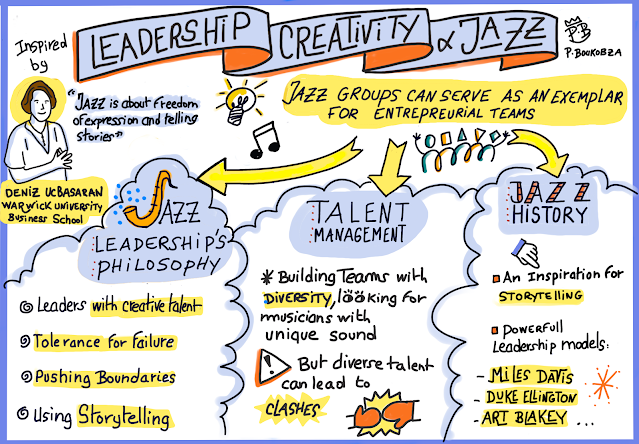In the dynamic world of entrepreneurship, companies are constantly seeking innovative ways to inspire their teams and foster creativity. Interestingly, the world of jazz music, with its improvisation, diversity, and unique leadership styles, offers valuable insights for the business community.
in this YouTube video, Deniz Ucbasaran, Professor of Entrepreneurship at Warwick Business School, draws parallels between jazz bands and entrepreneurial teams.
Jazz as a Model for Entrepreneurial Teams
Jazz groups are exemplary models for entrepreneurial teams operating in dynamic environments. The fluidity and adaptability required in jazz music mirror the conditions of the business world, where change is the only constant. Storytelling, a key element in jazz, also plays a significant role in leadership and talent management within entrepreneurial circles.
Leadership and Creativity in Jazz
The leadership style in jazz bands, as exemplified by legends like Miles Davis and Duke Ellington, is characterized by a willingness to embrace conflict and diversity. Leaders in jazz understand that conflict is the price paid for bringing together diverse talents, which can lead to radical innovation or, if not managed well, destructiveness.
Miles Davis, in particular, was known for pushing his band members out of their comfort zones, encouraging them to play in different keys and to embrace mistakes. This approach often led to fantastic, unexpected results, highlighting the importance of tolerance for errors and boundary-pushing in fostering creativity.
Diversity and conflict: The essence of Jazz
The ethos of jazz is centered around freedom of expression. It's about telling stories through music without being confined to a specific genre or period. This philosophy goes against the grain of conformity, encouraging musicians to explore and express their individuality.
Diversity in jazz is not just about different musical styles or backgrounds; it's about the unique contributions each musician brings to the table. This diversity can lead to conflict, but in the context of jazz, such conflict is not shunned but rather accepted as a catalyst for creativity and innovation.
Entrepreneurial leaders can draw several lessons from jazz:
- Embrace diversity and conflict: Just as jazz groups thrive on the diverse talents of their members, businesses can benefit from a variety of perspectives and ideas, leading to innovation and better decision-making.
- Foster a culture of risk-takin: Encouraging team members to take risks and learn from mistakes can lead to greater creativity and innovation, much like improvisation in jazz.
- Lead collaboratively: Jazz bands often feature collaborative leadership, where the bandleader sets the tone but allows each musician to contribute their voice. This approach can be effective in business environments that value adaptability and improvisation.
- Storytelling as a leadership tool: In jazz, each piece tells a story, and similarly, leaders can use storytelling to make sense of complex business environments and guide their teams through change.
In conclusion, the world of jazz offers a rich tapestry of strategies for leadership, creativity, and innovation that can be applied to the entrepreneurial landscape. By adopting the principles of jazz—embracing diversity, encouraging risk-taking, leading collaboratively, and using storytelling— entrepreneurial leaders can cultivate an environment where innovation thrives and teams are empowered to perform at their best.

Comments